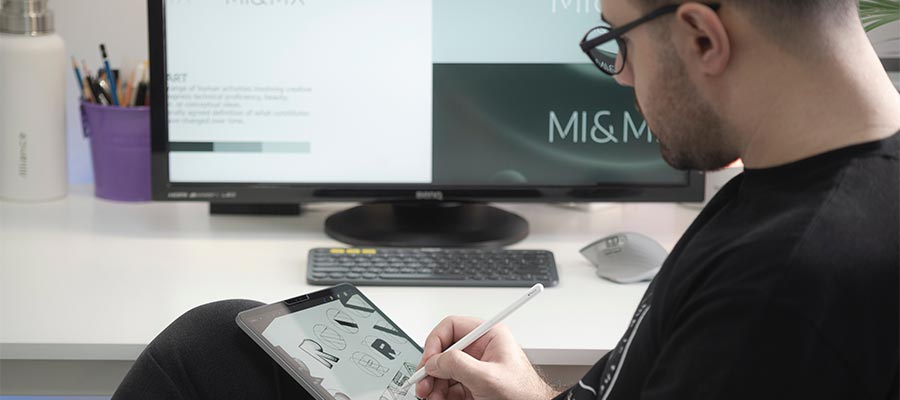How Web Designers Working Remotely Can Thrive
Working from home has become a way of life for many web designers. Whether it’s driven by a desire to be on your own or a result of the pandemic, more of us are eschewing the traditional office setting.
But being a remote worker comes with unique challenges. It changes the way we communicate. The rules for when we’re in the office, along with how we get things done are more flexible.
Productivity can be difficult to achieve. In some ways, the freedom this arrangement provides can also place a lot of stress on us. Thus, it’s easy to feel stuck or isolated.
And it’s not just newbies who struggle with this way of life. Even those of us who have been working remotely for years run into obstacles. No one is immune.
If you need a little pick-me-up, we’re here to help! Today we’ll offer some tips and techniques to help you thrive as a remote web designer.
Ensure That You Have the Right Tools
Web design is always challenging. But it’s even more so when you don’t have the right tools to do your job.
It all starts with a computer that is powerful and stable. This will allow you to run apps without frequent crashes or long waits for tasks to complete. It doesn’t have to be the most expensive setup known to humankind, just enough to handle your needs.
Speaking of apps, you should have all of the basics at your disposal. Software for writing code, editing images, running a local hosting environment, and a standard office suite comes to mind. There may be other requirements, depending on your particular niche.
There are also cloud services that can make your life easier. For example, cloud storage can allow you to efficiently transfer and share large files. And online design apps like Figma are perfect for creating and collaborating on project mockups.
Just as important – get the fastest internet connection you can afford. Skimping in this area will cost you valuable time.

Organize Your Clients and Projects
If you happen to have a colleague dedicated to managing projects and/or billing, consider yourself lucky. For the rest of us, keeping track of these items is often a monumental task. Yet, it’s also vital for taking things off of your to-do list and keeping clients happy. Oh, and you will probably want to get paid for your work as well.
What’s that – you don’t have a to-do list? That should probably change. Using a project management app allows you to see where you stand, along with what you still need to accomplish.
Attempting to handwrite notes or (worse yet) manage things via email threads is a disaster waiting to happen. Details are likely to be missed, which hurts project outcomes.
The same goes for finances. There are plenty of options available for keeping tabs on how much clients owe and sending invoices.
As awesome as web designers are, we’re still only human. And our minds can only remember so many things. By taking steps to organize what you’re doing and who you’re doing it for, you’ll have more brainpower to devote to design and code.

Keep a Regular Schedule
Working remotely takes discipline. No boss is walking by your desk every hour to “motivate” you. And there are so many potential distractions to deal with.
Plus, there’s a temptation to work all manner of odd hours. There’s a certain appeal to only sitting at your desk when the mood strikes you. But not everyone can mentally adjust to such a habit.
That’s why we recommend keeping a regular schedule of office hours. This puts your mind and body into a routine. Having some consistency in your day will be a big step toward being productive.
A schedule also benefits your clients and colleagues. They’ll know the best times to reach you and when to expect projects to be completed.
If you find that you’re falling behind or having trouble focusing, look at your schedule. Is it consistent? If not, this is an area where you can improve.

Take Plenty of Breaks
Whether you’re on a creative roll or buried in buggy code, it’s easy to become a little too anchored to your chair. Before you know it, hours have passed, and your eyesight may have become a bit blurry.
Getting work done is wonderful – but it shouldn’t come at the expense of your health. Sitting for long periods is not good for you mentally or physically. Not to mention that the quality of what you produce may suffer.
Short of a true emergency, there’s nothing wrong with taking regular breaks. Step outdoors for a few minutes or play with a pet. Anything that involves some physical movement outside of your office is fair game.
Your brain will be refreshed, and your body will feel better. Therefore, make it a point to take a break every hour or so.

Find Opportunities to Connect
Did we mention that remote work can be lonely? It’s a point worth hammering home because it can impact work and life.
Thankfully, there are ways to connect to the outside world – ones that go beyond social media. For instance, the web design community is teeming with both in-person and virtual events. They cover niche topics like WordPress, but also broader ones as well.
Still, no rule says you have you participate in something work-related. Activities that interest you personally are just as important. They’re a means to get away from the stressors that come with being a web designer.
Being confined (willingly or not) to a home office can lead to losing out on the human connection. It’s perhaps the biggest difference from going into a centralized workplace each day. Therefore, we must make an extra effort to fulfill that part of our needs.
Whatever the subject matter, find something that you enjoy and make a point to participate.

Become a Pro at Working Remotely
Web design lends itself well to remote work. You don’t need to trudge into an office each day or live by the old standards. It was among the first career paths to break the mold – and it continues to do so.
Still, this lifestyle requires some adjustment. Even if you’ve worked remotely for years, every day is a learning experience. But it gets better over time.
Thriving requires attention to detail and an awareness of your needs. It starts by having access to the right tools. From there, it’s about getting organized and developing a routine.
Along the way, it’s important to consider your health and wellbeing. Stay active and don’t be afraid to get away from your desk. And find activities outside the office that allow you to connect with other people.
Working remotely can be a fulfilling experience. We hope the ideas above will help in your journey!